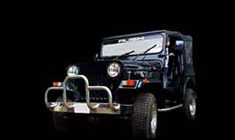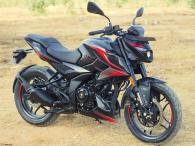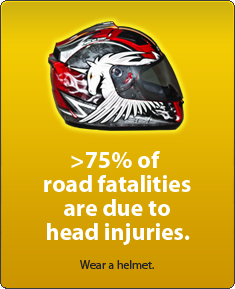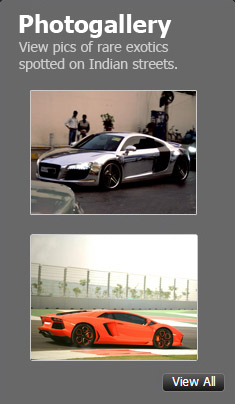News
My Porsche 911 GT3 RS & Mclaren Senna: Ownership experience
After spending time in the 911 GT3 RS, moving over to the Senna is the equivalent of trading in a battle axe for a cruise missile.
BHPian SSO recently shared this with other enthusiasts.
As requested, here's the piece on the 911 GT3 RS with the Senna thrown in as a bonus. I've owned the GT3 RS for 5 years now and the Senna for a bit more than 2. More on the ownership experience, and a bunch of pictures, is captured on karenable.com.
With the arrival of the Porsche 911 (997.2) GT3 RS on the east coast, I’ve found that the two sets of keys I have been reaching for most frequently in the past couple of weekends have been those of the white red-eared beast and the ice blue land shark. While the 911 GT3 RS and the McLaren Senna share a purpose in life, how they go about accomplishing it is completely different. This dichotomy makes them quite enthralling to drive back to back.
If there is one word to describe the 911 (997.2) GT3 RS it’s “raw”. From the moment you put your foot on the brake, push in the clutch pedal, and turn the key to the right, it is a loud, vibrating, ball of muscle. Release the clutch pedal when you are not in gear and it sounds like someone is shaking a metal box of spanners right behind your head. Sound deadening in the cabin is minimal if it exists at all. The clutch is heavy and very exact. The stick shift is stiff and deliberate. It is not one that you stir lazily with your wrist. Changing gears in the GT3 RS is a full arm exercise. You need to be both committed and precise. Miss even slightly and you will land in the wrong gear, a very bad thing, especially when downshifting. The racing buckets are excellent. They wrap around you and keep you firmly planted behind the wheel. The seating position is higher and feels more upright than other supercars. Driving the GT3 RS requires a high degree of concentration and driving it hard, requires a fair amount of skill. While the GT3 RS has huge amounts of grip, you never forget that it will bite you quickly if you get it wrong.
The 911 GT3 RS requires hard work to get the best out of it. Your right hand is constantly moving from the steering wheel to the gear shift. The clutch is not of the forgiving type so getting the timing right between the right hand and left foot is critical. The GT3 RS needs to be pushed to get the best out of it. Cruising is not its forte. Corners are definitely slow in, fast out. At the apex, you can feel a very slight bit of body roll and you know the engine is hung off the back axle. Moving that weight around smoothly is key to getting the most out of the GT3 RS. As it swings through a corner you need to balance the movement and then pick the right moment to plant your right foot and power out. It’s a bit like dancing to hard rock, it's loud, there is screaming all around you, you have to be careful with your movements or you will get smacked but it’s a massive adrenalin rush. Power delivery is also very different. Below 4000 rpm, it is lazy, once you get it into the 5000 rpm and up the range, it starts to come into its own and just flies.
For an hour drive on some great backcountry roads, the GT3 RS is near perfect. The driving position is quite comfortable, the controls are all well-arranged and intuitive, and the sightlines are excellent. The lack of sound-deadening coupled with the very firm suspension does cause a fair amount of brain and body damage when exposed to for extended periods. The GT3 RS is clearly a car designed for the track, not road trips. The GT3 RS does well on the roads around here, nothing is straight for very long and you can get the car flowing smoothly through the multiple “s” curves as you wind through the woods. On my go-to “I have an hour to go enjoy a drive” route, the GT3 RS both struggles and really shines. There are a few sections that are quite slow and as the revs drop, the engine gets quite lazy. On the quicker bits, it shines and feels very dialled in. Passing is a bit of work as it needs proper planning. To do it well isn’t just a question of planting your right foot, swinging left and just going. A well-executed pass on the GT3 RS involves dropping down 2 gears, having space to give yourself a bit of a run before you swing out, burying your right foot as you enter the left-hand lane, and then shifting up as you swing back right as the slower moving obstacle now recedes in your rearview mirror. The GT3 RS demands concentration, which helps make it a truly engaging car to drive.
After spending time in the 911 GT3 RS, moving over to the Senna is the equivalent of trading in a battle axe for a cruise missile. Open the wing door, drop yourself carefully into the high sided racing seat, clip on the seatbelt, give the bright red “start” button and firm poke, and all eight cylinders erupt angrily right behind your head. Back the Senna out of the garage, trundle down the driveway and then pull out onto the road. Once out on the road and clear of traffic, you can plant your right foot and it instantly takes off. Turbo lag is nearly imperceivable. On the road, the Senna is just mind-bendingly quick. The Senna is a much bigger car but it’s both lighter and more agile. With the engine buried in the middle of the car, you don’t get that same feeling of weight moving behind you when the wheels aren’t pointed directly ahead. The gearbox, even in comfort mode, is quick and the cogs change almost instantly when you pull the paddles. While the paddles may lack some of the engagement of an old school stick, they more than make up for it in the speed at which the cogs change. Pull the right-hand paddle when pushing a bit and you get a nice bang out the back with every tug. Steering, as per all McLaren’s, is nicely weighted and provides excellent feedback. It makes what is quite a large car, feel nimble and compact. The very minimal sound deadening means that you get to hear much of what’s happening behind you while providing valuable feedback on just how fast you might be going. In the Senna, you feel glued to the road at all times which just builds your confidence to push it harder.
Forward and side visibility in the Senna is excellent and the Senna is quite easy to place on the road. Rearview visibility is limited but, what’s behind you is normally fading into the distance, not closing on you. The combination of gorilla glass in both the roof panels and the lower doors adds a huge amount of light to the cabin giving it a feeling of spaciousness despite the tight confines. It also helps focus your attention outward and the extra light makes the whole experience a bit more relaxing. We have both normal road seat belts, as well as the six-point track harnesses, mounted but for road use, I always use the standard belts as the high sides on the seats keep you firmly planted in place.
Driving the Senna and 911 GT3 RS back to back over the same roads really highlights the difference between the two cars. One of the things I did notice was I was definitely moving faster on the Senna across the entire route. The funny thing though is it actually felt slower. In the Senna, you almost have to push it harder to get it into a window where it starts to come into its own and flow. In neither case was I trying to push the car hard, but that complete lack of body roll and weight shifting you get with the Senna just naturally turned into carrying a bit more speed. Whereas you need to set yourself up properly going into a corner in the 911 GT3 RS, you can be lazy in the Senna and just power through the curve. My guess is two hours pushing hard on the autobahn in the 911 GT3 RS would be exhausting but in the Senna, at the same speed, you would emerge from the drive fairly relaxed. While the Senna brakes do have the ability to pop your eyeballs out if you mash them hard at speed, the 911 GT3 RS’ massive ceramic brakes are plenty good in their own right.
Despite being “track” focused, both the 911 GT3 RS and Senna do quite well on normal roads. While the ride in both is quite firm, it's compliant enough that you’re not replacing fillings if you hit a bump in the road. The Senna does feel more like a race car that’s been modified for road use while the 911 GT3 RS is more of a road car that’s been stripped down for the track. While I would call this Porsche one of the last and finest of the old school analogue cars, the McLaren represent the cutting edge of today’s hypercar technology. The McLaren Senna will make a good driver look like a hero, right before it bites your head off. The Porsche 911 GT3 RS will remind an average driver that they are exactly that. At the end of the day, they are each wonderful machines and I’m just glad I don’t have to choose between them.
Check out BHPian comments for more insights and information.



















